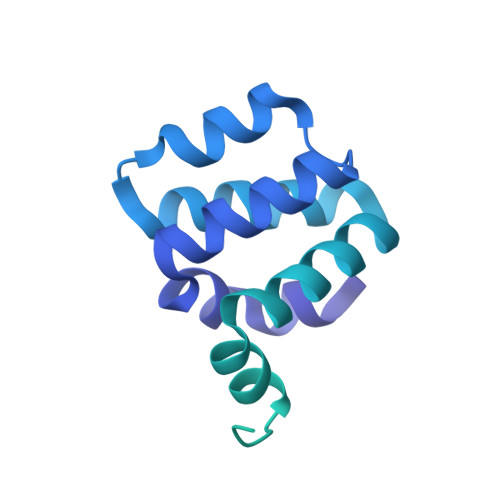Cryo-EM structure of the NLRC4CARDfilament provides insights into how symmetric and asymmetric supramolecular structures drive inflammasome assembly.
Matyszewski, M., Zheng, W., Lueck, J., Antiochos, B., Egelman, E.H., Sohn, J.(2018) J Biological Chem 293: 20240-20248
- PubMed: 30385506
- DOI: https://doi.org/10.1074/jbc.RA118.006050
- Primary Citation of Related Structures:
6MKS - PubMed Abstract:
Inflammasomes are supramolecular signaling platforms integral to innate immune defense against invading pathogens. The NOD-like receptor (NLR) family apoptosis inhibitory protein (NAIP)·NLR family caspase-recruiting domain (CARD) domain-containing 4 (NLRC4) inflammasome recognizes intracellular bacteria and induces the polymerization of the caspase-1 protease, which in turn executes maturation of interleukin-1β (IL-1β) and pyroptosis. Several high-resolution structures of the fully assembled NAIP·NLRC4 complex are available, but these structures do not resolve the architecture of the CARD filament in atomic detail. Here, we present the cryo-EM structure of the filament assembled by the CARD of human NLRC4 (NLRC4 CARD ) at 3.4 Å resolution. The structure revealed that the helical architecture of the NLRC4 CARD filament is essentially identical to that of the downstream filament assembled by the CARD of caspase-1 (casp1 CARD ), but deviates from the split washer-like assembly of the NAIP·NLRC4 oligomer. Our results suggest that architectural complementarity is a major driver for the recognition between upstream and downstream CARD assemblies in inflammasomes. Furthermore, a Monte Carlo simulation of the NLRC4 CARD filament assembly rationalized why an (un)decameric NLRC4 oligomer is optimal for assembling the helical base of the NLRC4 CARD filament. Together, our results explain how symmetric and asymmetric supramolecular assemblies enable high-fidelity signaling in inflammasomes.
- From the Department of Biophysics and Biophysical Chemistry, Johns Hopkins University School of Medicine, Baltimore, Maryland 21205.
Organizational Affiliation:
















